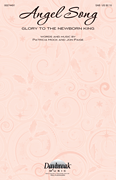Search Results for: “ANGEL SONG”
Loading...
Angels We Have Heard On High View 399 Products
Chatter With The Angels View 9 Products
Angel Song (Glory To The Newborn King) View 4 Products
Angel Song View 3 Products
He Is Not Here (Easter Angel Song) View 2 Products
Song That The Angels Can't Sing View 2 Products
Angelina The Baker View 1 Product
The Angel's Song View 1 Product
Angel Song Ii View 1 Product
Song Of The Angel View 1 Product
Angel's Song (Lois Fyfe) View 1 Product
On A Renaissance Carol (The Angel's Song) View 1 Product
Songs Of Praise The Angels Sang View 1 Product
Angels' Song View 1 Product
Song Of The Angels And Shepherds View 1 Product
The Song Of Angels View 1 Product
Songs Of Praise The Angels Sang (Attwood) View 1 Product
Song Of The Angels View 1 Product
The Yum-Yum Song View 1 Product

